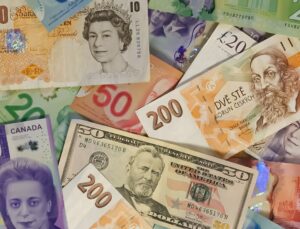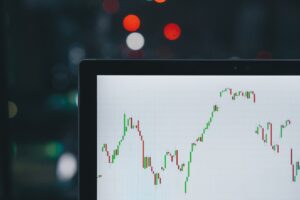Understanding the Relationship between Forex and Gold Markets
The foreign exchange market, commonly known as forex, and the gold market are two of the largest and most influential financial markets in the world. Both markets attract investors and traders from all corners of the globe, each with their own unique characteristics and factors that drive their movements. In this article, we will delve into the relationship between forex and gold markets and explore how they interact with each other.
Forex Market Overview:
The forex market is a decentralized market where currencies are traded. It operates 24 hours a day and is the largest financial market globally, with an average daily trading volume exceeding $6 trillion. The forex market is driven by various factors, including economic indicators, geopolitical events, and monetary policies. The most popular currency pairs in forex trading are the major pairs, which include the US dollar (USD), Euro (EUR), Japanese yen (JPY), British pound (GBP), Swiss franc (CHF), Canadian dollar (CAD), and Australian dollar (AUD).
Gold Market Overview:
Gold has been considered a store of value for centuries and is often seen as a safe-haven asset during times of economic uncertainty. The gold market, also known as the precious metals market, operates differently from the forex market. Gold is traded primarily through futures contracts on exchanges such as the Chicago Mercantile Exchange (CME) and the London Bullion Market Association (LBMA). The price of gold is influenced by various factors including supply and demand dynamics, inflation, interest rates, and investor sentiment.
Relationship between Forex and Gold Markets:
The relationship between forex and gold markets is complex and can be influenced by various factors. One of the primary drivers of this relationship is the inverse correlation between the US dollar and gold. As the US dollar strengthens, the price of gold tends to decline, and vice versa. This is because gold is priced in US dollars, and a stronger dollar makes gold relatively more expensive for holders of other currencies, thereby reducing demand.
Another factor that influences the relationship between forex and gold markets is risk sentiment. During times of economic uncertainty or market volatility, investors tend to seek safe-haven assets such as gold. This flight to safety can lead to an increase in the demand for gold, resulting in a rise in its price. Conversely, when market sentiment improves, investors may move away from safe-haven assets and invest in riskier assets such as currencies, leading to a decrease in gold prices.
Furthermore, central bank policies and monetary decisions can also impact both forex and gold markets. Central banks often utilize interest rate changes and quantitative easing programs to stimulate or control their respective economies. These policy decisions can impact the value of currencies and influence the price of gold. For example, if a central bank decides to lower interest rates, it can weaken the currency, making gold relatively more attractive.
It is also important to note that while gold is often seen as a safe-haven asset, it is not immune to market fluctuations. Like any other asset, the price of gold can be influenced by speculative trading, market manipulation, and supply and demand dynamics.
Trading Opportunities:
Understanding the relationship between forex and gold markets can provide traders with valuable insights and trading opportunities. By monitoring the correlation between the US dollar and gold, traders can make informed decisions when trading currency pairs involving the US dollar. For example, if the US dollar is weakening, it may be a favorable time to buy gold or trade currency pairs where the US dollar is the base currency.
Furthermore, traders can also use gold as a leading indicator for currency movements. As gold is sensitive to economic and geopolitical events, shifts in gold prices can signal potential changes in forex markets. For instance, if gold prices are soaring due to geopolitical tensions, it may indicate a potential downturn in riskier currencies.
Conclusion:
The relationship between forex and gold markets is complex and influenced by various factors. Understanding this relationship can help traders make informed decisions and identify trading opportunities. The inverse correlation between the US dollar and gold, along with risk sentiment and central bank policies, play a significant role in shaping the dynamics between these two markets. By closely monitoring these factors, traders can enhance their trading strategies and potentially profit from the interactions between forex and gold markets.






